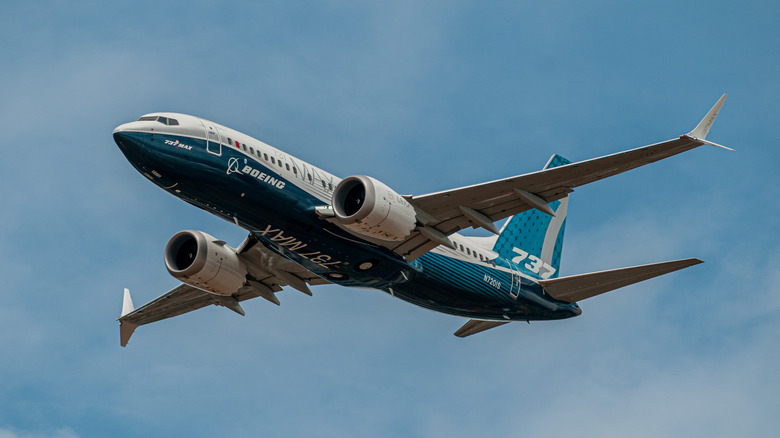
Wirestock Creators/Shutterstock
Boeing has historically been one of the United States’ great success stories. Founded by William Boeing in 1916, the company has since become the country’s largest exporter as one of the leading global aerospace manufacturers and defense contractors. It proudly states that it is guided by the principles of safety, quality, integrity, and transparency, which carried the company well into the 21st century. Yet suddenly, in 2018, the stalwart of U.S. aviation faced many problems with its newest aircraft, the 737 MAX.
The Boeing 737 MAX is one of the most controversial planes ever to have flown, but it seemed to be founded on good intentions. Launched in 2011, it was to be an updated version of the 737 to rival the Airbus A320neo as the company’s flagship narrow-body, twin-engine passenger jet. The plan was to have better fuel economy and produce fewer emissions, making it a more affordable and environmentally friendly alternative to its aging predecessor.
However, the new member of Boeing’s most successful family of short-haul commercial jets experienced two fatal crashes soon after receiving its Federal Aviation Administration (FAA) passenger service certification in 2018. Subsequent issues have placed the 737 MAX under further scrutiny, landing the Boeing company in serious turmoil. Its reputation among customers and stockholders has been tested multiple times, with the future of the aircraft hanging in the balance. So, what went wrong for the USA’s leading airline manufacturer, and what is the outlook for the 737 MAX?
The 737: Boeing’s most successful passenger jet
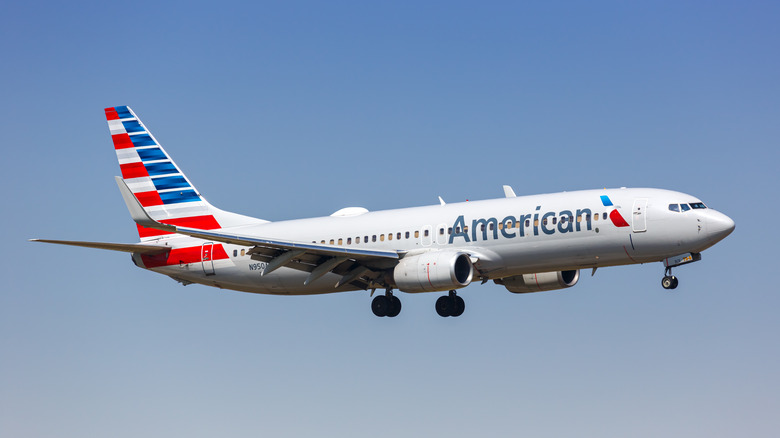
Boarding1now/Getty Images
The 737’s development dates back to 1958 when Boeing decided it needed a new twin-engine feeder aircraft that could service smaller airports and regional routes to complement its existing line of long-haul passenger jets. The first order was placed by German carrier Lufthansa in 1965, four years before the Boeing 747 performed its maiden flight.
A notable development in the aircraft was its engine placement. These were affixed flush with the wings, where it was initially suggested that they be mounted at the rear beneath a T-tail with higher stabilizers (rear wings). This revolutionized the design, allowing for a better center of gravity, improved aerodynamics, more usable space to the rear of the fuselage, and a quieter passenger experience. Crucially, with this new engine configuration, the 737 could carry over 100 passengers, making it a very appealing prospect to airlines.
The original 737 was a great success after it went into service in 1968. Bar some initial teething problems, the aircraft proved to be economical and reliable, and the orders flooded in. The 737 went on to become the biggest-selling passenger aircraft in the world, a record that stood until 2019 when the Airbus A320 overtook it. However, the statistics that accompany the 737 are undoubtedly impressive. Its global fleet numbers almost 10,000 units, over a quarter of which are flying at any given time. As of November 2019, it has clocked over 370 million flight hours, with over 170 billion miles flown. Somewhere in the world, a 737 is taking off every 1.5 seconds, and it has carried over 30 billion passengers throughout its history.
A new generation of aircraft
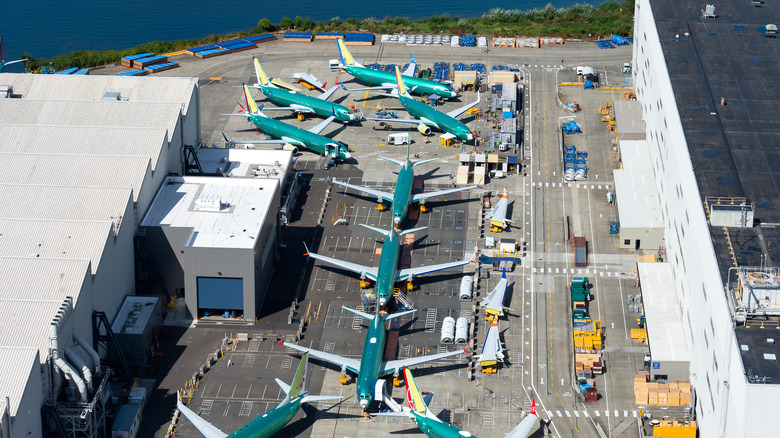
Thiago B Trevisan/Shutterstock
In August 2011, after 46 successful years running the 737, Boeing launched the MAX family of 737 passenger aircraft. By this time, the industry had changed, with environmental concerns — including fuel consumption and carbon dioxide emissions — becoming a major factor in the viability of commercial aviation. To this end, Airbus had already put plans in place with the announcement of its A320neo model, a more economical version of its leading A320 (which remains the main rival to the 737 aircraft line). American Airlines, which had only bought Boeing planes over the previous decade, had already defected and placed an order for hundreds of A320neo units. Boeing had to act fast if it were to compete.
Boeing knew that developing an entirely new aircraft from scratch would take around 10 years, and time was not on its side, so it went with the quicker and easier option. That was to update its existing bestseller, the 737, which was to be completed in six years, keeping the company competitive and its stockholders satisfied. Boeing saved considerable time and expense by issuing an aircraft based on the 737’s «type certificate,» which states its airworthiness. This meant the company didn’t have to train pilots and ground staff from scratch.
Sure enough, the new plane was ready ahead of schedule. The 737 MAX 7 was launched in 2016 and received its FAA certification the next year. Once operational, it achieved everything Boeing said it would, with a 20% reduction in fuel use and CO2 emissions compared to the previous 737, the 737 Next Generation. It also had up to 570 nautical miles more range and a 50% quieter operation.
Technical features of the 737 MAX
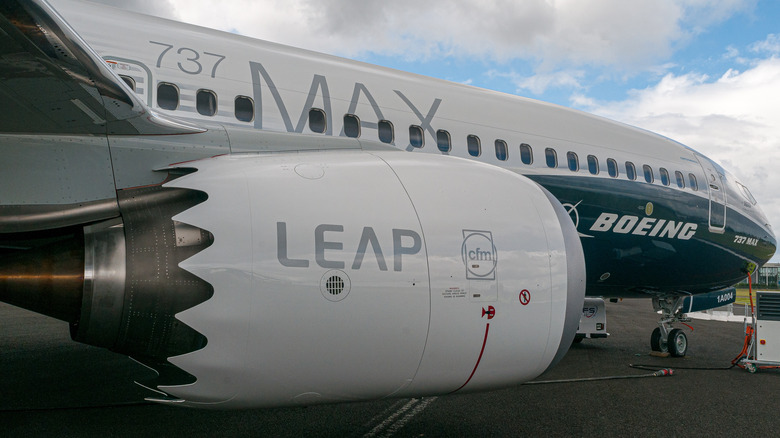
Wirestock/Getty Images
The 737 MAX was markedly different from the 737 Next-Generation despite being created under an amended type certificate as a variant of its predecessor. Upgrades included a fly-by-wire spoiler system to reduce weight and shorten stopping distances; updated software systems; a redesigned tail cone that would reduce drag and improve fuel economy; new dynamic winglets with integral aerofoils; and a completely redesigned cockpit with four 15-inch LCD displays. Notably, Boeing also added a Maneuvering Characteristics Augmentation System (MCAS) to apply nose-down stabilizer trim when the trajectory or «angle of attack» is too steep and the autopilot is not engaged.
Chief among its new features was the LEAP-1B engine. Each weighed 385 kilograms more than the 737 Next-Generation engine, requiring a stronger fuselage and more robust engine struts, wings, and landing gear. When combined, this contributed to an extra 3,000 kilograms in weight. But the larger, more powerful LEAP-1B was still more efficient and cleaner, accounting for the overall improvements in fuel economy, emissions levels, and performance.
The first-generation 737 MAX 7 could carry a maximum of 172 people to high-altitude destinations and operate in hotter climates with an additional High Altitude Package, making it a highly versatile option for global customers. Boeing subsequently announced its plans for three more MAX planes: the Max 8, capable of carrying 210 passengers, and the MAX 9 and MAX 10, with a maximum capacity of 220 and 230, respectively. On paper, the MAX was a capable and efficient evolutionary step to continue the world-leading 737’s legacy. It should have been the aircraft to give Airbus a run for its money.
Initial orders and launch
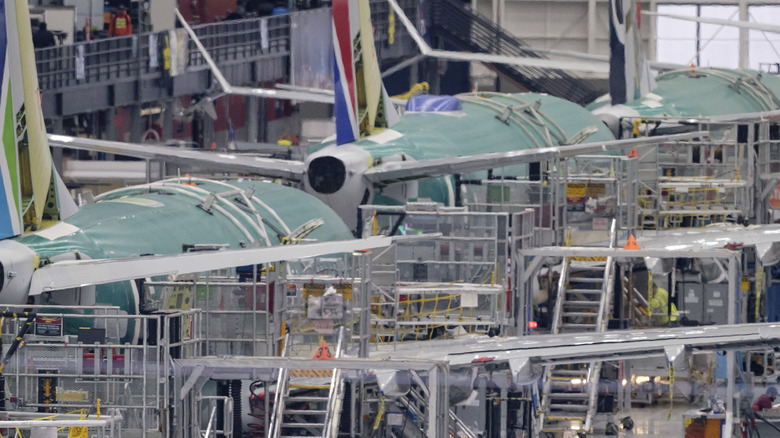
Stephen Brashear/Getty Images
The 737 MAX was named after its goal: To maximize the fundamental qualities of commercial air travel, namely reliability, efficiency, and comfort. In addition to the previously mentioned technical features, it would have higher ceilings with integrated luggage bins, «Sky Interior» mood lighting to put passengers at ease, and it planned to build on the 737 Next-Generation’s excellent record for dependability.
The outlook at launch was positive, with the 737 MAX becoming Boeing’s fastest-selling model in its 100-plus-year history, buoyed by the promise of lower per-seat costs and longer range. By the time it was ready to take paying customers to the air it had received over 4,000 orders. Boeing’s plan to upgrade its faithful single-aisle workhorse was looking like it had paid off.
The trailblazing new 737 MAX was to be distributed all over the world, with United Airlines, Southwest Airlines, Delta Airlines, Alaska Airlines, FlyDubai, and Lion Air among the first companies to place orders. The latter is Indonesia’s largest carrier with many flights across the Asia-Pacific region, and it ordered 251 MAX aircraft starting as early as 2012. With so many orders to fulfill across dozens of worldwide carriers, Boeing would have to double its efforts to ensure the strictest quality control measures while delivering on its promises.
The two tragic incidents involving the 737 MAX
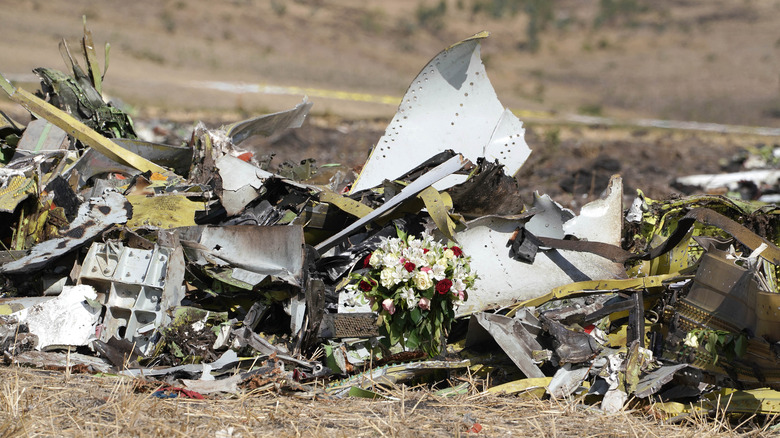
Jemal Countess/Getty Images
In February 2018, the FAA certified the 737 MAX for passenger service, giving Boeing’s customers the green light to commence commercial flights. Just eight months later, on October 29, the 737 MAX 8 of Lion Air flight 610 crashed into the sea shortly after departing from Jakarta, Indonesia. All 189 passengers and crew were killed. This remains the deadliest air accident involving the 737 series of aircraft, and Indonesia’s National Transportation Safety Committee immediately launched an investigation to ascertain what caused the incident. Less than five months later, on March 10, 2019, Ethiopian Airlines flight 302 — another 737 MAX 8 — suffered a similar fate shortly after takeoff, crashing near the town of Bishoftu in central Ethiopia. This time 157 passengers and crew tragically lost their lives, and the Ethiopia Accident Investigation Bureau launched its own investigation into the disaster.
Boeing and the 737 MAX, already under considerable scrutiny following the loss of Lion Air 610, were thrown into turmoil. This unprecedented double disaster raised many questions regarding the design, manufacture, and operation of the aircraft. On March 13, 2019, the Federal Aviation Administration (FAA) grounded the plane in the U.S., followed by several more civil aviation authorities worldwide. By March 18, all 737 MAX planes were taken out of service. Initially, it was found that both doomed flights behaved similarly after takeoff, and both Ethiopian and Indonesian reports drew attention to the MCAS stabilizing device that was unique to the MAX series of 737 passenger jets.
Findings of the initial investigations
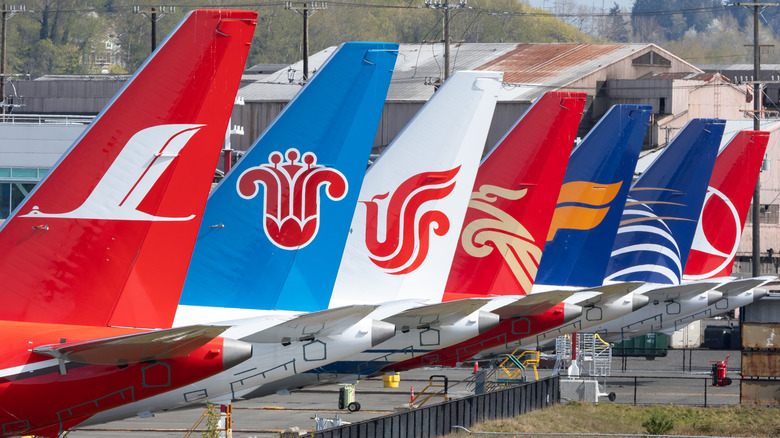
VDB Photos/Shutterstock
One of the main differences between the MAX and previous generations of the 737 jet is its engines. Where previously they were placed underneath the wings, the larger LEAP-1B engines had to be placed higher up on the wing. When at full thrust, such as during takeoff, the new engine placement causes the nose to rise. The Maneuvering Characteristics Augmentation System (MCAS) counters this by automatically adjusting the trim of the nose to point downward when it detects that the plane is pointing too high. In each of the two disasters, the MCAS acted in error after giving a false calculation of the aircraft’s upward trajectory.
The U.S. National Transportation Safety Board (NTSB) did not lead the initial investigations into the two 737 MAX crashes in Indonesian and Ethiopia, as these both occurred overseas, but a representative was present to assist with both inquiries. In its own review, the NTSB investigated the pilots’ recognition of, and response to, the MCAS. It found that when alerts were issued each pilot responded differently, suggesting that poor communication between the manufacturer and airlines was largely to blame, and that sufficient training could have averted disaster in both cases.
Lack of MCAS training
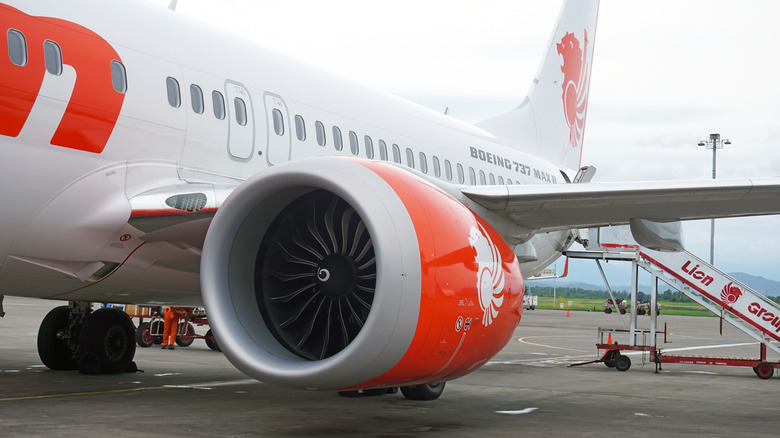
Isto Adhimas/Shutterstock
Crucially, a House Committee on Transportation and Infrastructure report found that thorough instructions for the MCAS were not included in the pilot manual, and a great amount of faith was placed in the software doing its job. It’s worth noting that additional pilot training was one of the key factors that swayed Boeing toward upgrading the existing 737 on its previous type certificate, and the FAA had verbally approved removal of the MCAS system from the 737 MAX operating instructions. «As a result, 737 MAX pilots were precluded from knowing of the existence of MCAS and its potential effect on aircraft handling without pilot command,» the report concluded.
In December 2020, after the longest grounding of any U.S. aircraft in history, the 737 MAX was deemed to be airworthy by the FAA after Boeing installed software updates and issued further training to pilots. «We expect to have sufficient number of inspectors on hand to meet Boeing’s planned delivery schedule for the foreseeable future,» the FAA said in a statement (via Reuters). «We’ll defer to Boeing to discuss the company’s manufacturing and delivery plans.»
Later incidents involving the 737 MAX
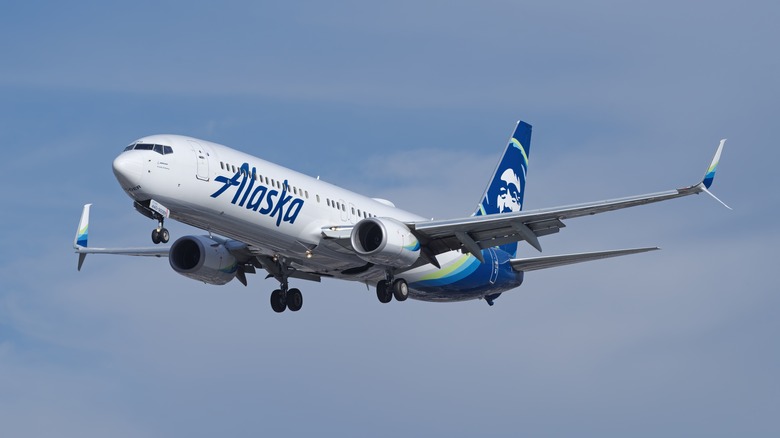
Angel DiBilio/Shutterstock
The results of the Ethiopian and Indonesian accident reports were both weighted heavily toward poor aircraft design. The FAA itself came under investigation by several government agencies, including the NTSB and FBI, as well as the U.S. Congress. The storm of controversy was far from over, as hundreds of families continued to mourn their dead, and the eyes of the world were turned toward Boeing and its latest generation of 737 MAX aircraft.
After an 18-month investigation, the House of Representatives confirmed that there were major flaws in Boeing’s design and development of the 737 MAX. The company had not lived up to its own guiding principles regarding safety and quality. Later, China’s aviation regulators announced their own safety concerns, and even Boeing itself reported manufacturing issues regarding poor assembly practices and the likelihood of loose hardware in the 737 MAX’s rudder control systems.
Fears about the potentially dangerous build quality of the 737 MAX were realized in January 2024 when a MAX 9 door plug blew out of Alaska Airlines Flight 1282 mid-flight. Luckily, nobody was harmed in the incident, but poor manufacturing standards were found to be a major issue in the case, and the FAA once again grounded all MAX 9 planes pending its investigation. The part in question was recovered from a garden in Portland, Oregon, and the subsequent investigation found that loose bolts were likely a cause of the incident. Further inspection of the grounded fleet of MAX 9 planes revealed that at least five more were found to have loose or missing bolts around exit door plugs and other components.
What went wrong for Boeing?

Jhvephoto/Getty Images
There was a time when Boeing was a trailblazing aerospace company focused on first rate design and engineering practices. It even built the first Lunar Orbiters during the Space Race of the 1960s. Then, in 1997, Boeing acquired the rival manufacturer McDonnell Douglas, assimilating its executives with its existing board. Harry Stonecipher, CEO of McDonnell Douglas, became CEO of Boeing in the new millennium and was brazen about the fact that he wanted to run it as a business first and an engineering firm second.
Since then, Boeing has faced criticism for focusing on appeasing its shareholders first and foremost, leaving little in the coffers for the design and development of new projects. And with a backlog of orders numbering thousands for the MAX alone, quality control seems to be falling behind Boeing’s previous high standards. Such shortcomings are compounded by the fact that since the turn of the new century, the company has outsourced as much as 70% of its design, manufacturing, and engineering work to strategic partners, per a 2009 a Supply Chain Forum report. These partners can outsource to other companies for certain tasks, making it difficult for Boeing to keep a close eye on production processes.
One of the outsourced companies, Spirit AeroSystems, builds entire fuselages of Boeing aircraft, where previously this would have been performed in-house at one of Boeing’s Wichita or Oklahoma facilities. As a result, Spirit AeroSystems has also come under fire during the controversy surrounding Boeing’s MAX fleet. Despite suggestions that the outsourced company was largely to blame, in the wake of the Alaska Airlines MAX 9 incident, a whistleblower stated that Boeing itself was responsible, causing further embarrassment for the company.
The future of the 737 MAX
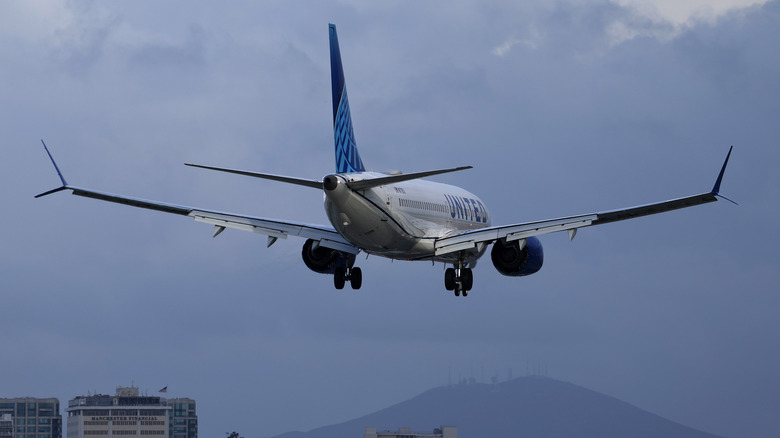
Kevin Carter/Getty Images
Boeing has always maintained that the 737 MAX is safe to fly when properly operated. In the wake of the two fatal crashes that occured soon after its launch, the company went back to the drawing board to update and improve its MCAS and pilot training program. However, there is still a lot of doubt surrounding the airworthiness of the 737 MAX, as evidenced by customers choosing to filter out the MAX when booking flights online.
Boeing has already paid a hefty price for the failures of what should have been a competitive rival to the Airbus A320neo, building on the past glories of the 737 — the most successful commercial aircraft of its day. Instead, it has been left playing catch-up, having been forced to pay around $20 billion in fines and $2.5 billion in a settlement for fraud charges. To add insult to injury, the A320 has just passed the 737 in total sales numbers, becoming the most successful commercial airliner ever as cancellations of existing 737 MAX orders snowballed to over 1,200 units.
It’s ironic that a company that put shareholders’ interests before its reputation has lost a considerable amount of value as a result of its damaged image. Whether the 737 MAX will claw back significant market share as Airbus soars with the growing family of A320neo and A320ceo aircraft remains to be seen. The future of Boeing may be uncertain, but a return to its founding principles of safety, quality, integrity, and transparency might just save it.